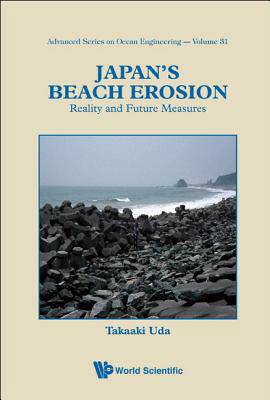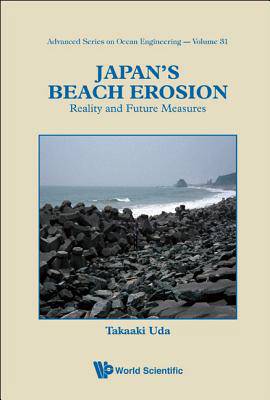
- Afhalen na 1 uur in een winkel met voorraad
- Gratis thuislevering in België vanaf € 30
- Ruim aanbod met 7 miljoen producten
- Afhalen na 1 uur in een winkel met voorraad
- Gratis thuislevering in België vanaf € 30
- Ruim aanbod met 7 miljoen producten
Zoeken
€ 235,45
+ 470 punten
Omschrijving
Beaches in Japan have been eroding since the 1970s as a result of the artificial land alterations. Approximately 3000 fishing ports and 1000 commercial ports have been built nationwide, as well as 2532 large dams being constructed in the upstream basins of large rivers. Due to the port and dam developments, fluvial sand supply has significantly reduced resulting in shoreline recession around the river mouths. Continuous sand supply along the coastline has also been obstructed by the port breakwaters. The formation of wave shelter zone by the port breakwaters induce longshore sand transport, thereby leading to an accretion of large amount of sand in the wave shelter zone and erosion in the surrounding area. Thus, almost all causes of the beach erosion in Japan are due to anthropogenic factors. The exact situation of the beach erosion has never been clear in literatures that are written in Japanese, or in English. Coastal engineers can and should learn from these results, otherwise the same situation and problems, which were induced by excessive coastal development without protection measures and due attention given to nearby coasts, will recur throughout the world.Textbooks on coastal engineering, that were already published, describe only the theoretical fundamentals of the subject, but lack the practical perspectives and field studies. The book examines many coastal areas as examples, highlighting the various erosion factors which should be avoided elsewhere globally. This book was first published in Japanese in 2004, and was translated into English by the present author.
Specificaties
Betrokkenen
- Auteur(s):
- Uitgeverij:
Inhoud
- Aantal bladzijden:
- 428
- Taal:
- Engels
- Reeks:
- Reeksnummer:
- nr. 31
Eigenschappen
- Productcode (EAN):
- 9789814277129
- Verschijningsdatum:
- 4/07/2010
- Uitvoering:
- Hardcover
- Formaat:
- Genaaid
- Afmetingen:
- 152 mm x 229 mm
- Gewicht:
- 517 g

Alleen bij Standaard Boekhandel
+ 470 punten op je klantenkaart van Standaard Boekhandel
Beoordelingen
We publiceren alleen reviews die voldoen aan de voorwaarden voor reviews. Bekijk onze voorwaarden voor reviews.











